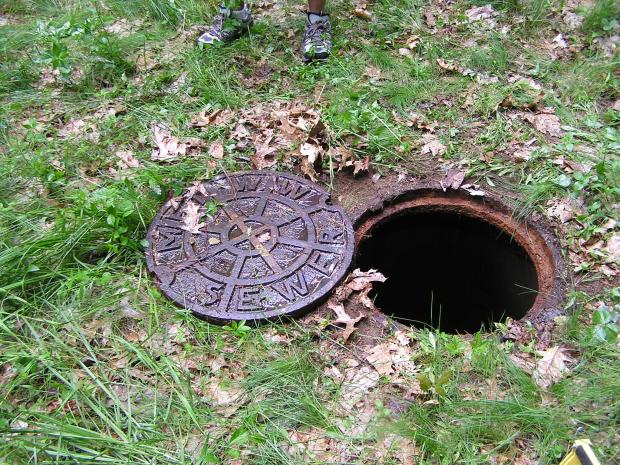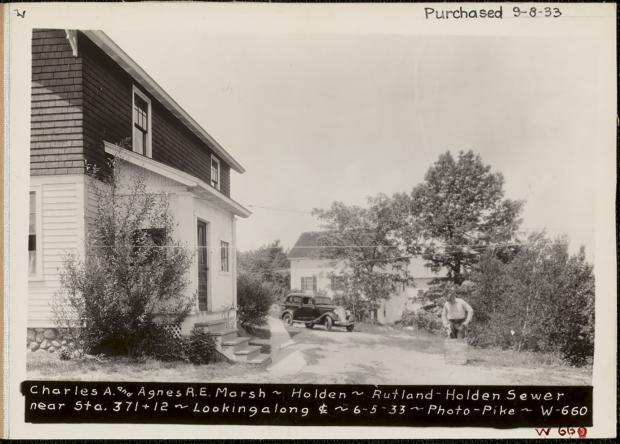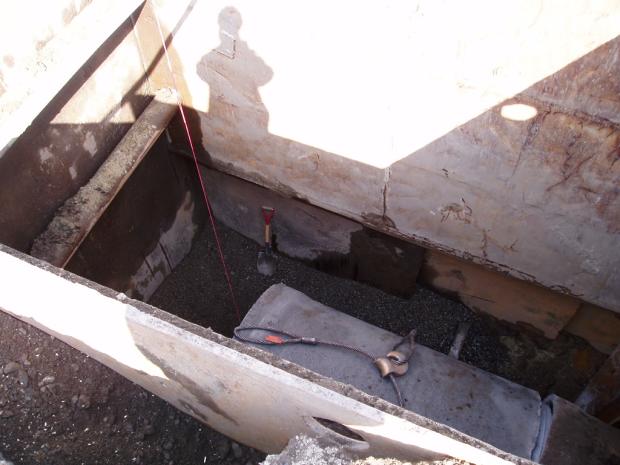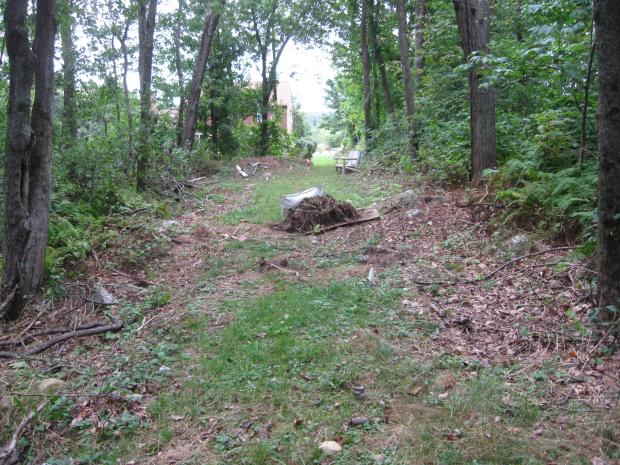DCR DWSP Sewer System History
DCR’s sewer system in the drinking water supply watersheds dates as far back as 1895, when under Chapter 488 of the Acts of 1895, Section 27, the Metropolitan Water Board was given entry rights to determine if sources of pollution existed; and if so, the Metropolitan Water Works board was tasked with providing public works for the removal or purification of sewage and then maintaining and operating these devices.
In 1932, the Metropolitan District Water Supply Commission (MDWSC, DCR’s predecessor) was authorized to construct, maintain and operate a sewer system in the towns of Rutland and Holden. There were multiple sources of contamination within the town limits of Rutland at that time; in particular, legislation that authorized the construction of the sewers noted that the sewers from any state or private institution in the towns and from any factory or other establishment where persons are employed may be connected to the main sewers or its branches. At the time, there were multiple hospitals in the area that were of concern, along with other industrial discharges that could potentially pollute the watershed. The sewers were constructed to address the issue of watershed pollution. Upon completion of this system, some sewer lines were turned over for operation and maintenance to the towns. The main trunk lines, however, were retained for ownership and operation by the Commonwealth. These lines remain under the care, custody and control of the DCR to this day.
The sewer lines started to show signs of reaching their capacity for flows in the late 1960s and early 1970s due to residential growth within these communities. A flow study was conducted in the late 1970s and design of an additional sewer line, which generally runs parallel to the existing 1930s era line, was authorized in 1979. The additional trunk line (the relief sewer line, as it’s known today) was advertised for bid in April 1983 and construction as completed in June 1985. The original sewer lines, including all branches that the state owns, total approximately 11 miles in length, from the center of Rutland to the Holden/Worcester line. The relief line is 8.3 miles long and varies from 16” in diameter in Rutland to 30” in Holden. The discharges from the original trunk and relief sewer lines travel through the City of Worcester’s sewer system and eventually are treated at the Upper Blackstone Water Pollution Abatement Control Facility and discharge to the Blackstone River in Millbury.
Map of the DCR DWSP Sewer System
This map contains details about the DCR sewer system in Rutland and Holden. Zoom down to a scale of 600 feet to see details about sewers in West Boylston and Holden.
West Boylston and Holden Sewer Expansion
In 1993, the Metropolitan District Commission (MDC, another predecessor agency to DCR) and MWRA were issued a consent order from the state Department of Environmental Protection (DEP) to implement a Watershed Protection Plan for the Wachusett Reservoir. MDC determined that construction of sewers within portions of the town of West Boylston that had undersized or failing septic systems, along with expanding portions of the publicly sewered area of Holden, was necessary to safeguard the Wachusett Reservoir Watershed.
MDC began construction of the sewer systems in West Boylston and Holden in 1999, and also paid for portions of the City of Worcester’s sewer systems to be upgraded to handle the additional flows from the new Wachusett Reservoir watershed sewer systems. These projects, done in multiple phases, were completed by 2004. As the newly-installed sewers were completed, the MDC turned over ownership, care, and control of the sewers and pump stations to the towns of Holden and West Boylston, with the new flows generally being directed into the MDC relief sewer line.
Ownership, Operation, and Maintenance
MDC was merged with the former Department of Environmental Management (DEM) in 2003 to create what is now known as DCR. While DCR owns the sewers, MWRA has, since its inception in 1984, been responsible for the operation, maintenance, and repair of the trunk and relief sewers. This includes routine surface inspections of the easements to look for signs of any problems, from tampering/illegal entry, to damage and illegal dumping. Mowing of the easement, along with clearing of any fallen trees, is routinely performed one to two times per year.
Anna Maria College entered into an agreement in 2004 that allowed them to direct discharges from their campus to the relief sewer line. So at this point in time, the DCR trunk and relief sewers receive wastewater from Rutland, Holden, West Boylston and Anna Maria College in Paxton.
As previously stated, the MWRA conducts routine inspections of the sewer lines. These include monthly surface inspections and regularly scheduled sub-surface inspections using cameras to travel along inside the pipes and record the conditions, looking for cracks, misaligned joints or sources of infiltration.
Sanitary Sewer Overflow Information
This website serves as both an informational source for the community regarding the DCR’s sewer system and to satisfy the requirements set forth in 314 CMR 16 for public notifications regarding sanitary sewer overflows (SSOs).
When a discharge or overflow occurs, DCR will send out a public advisory notification. On business days, this website will be updated within six hours of the notification. During weekends or holidays, this website will be updated on the next business day.
You can also see a list of discharge and overflow events on the MassDEP website. Enter Commonwealth of MA – DCR R/H trunk and relief main sewers in the Permittee field and click “Search.” This list is updated within 24 hours of when the public advisory notification is sent.
The fastest way to get information is to sign up to receive public advisory notifications. Please email Paula.Davison@mass.gov to be added to the email list.
For information on the sewers in these communities, please contact them directly.
- Holden DPW (508) 210-5550
- Rutland DPW



